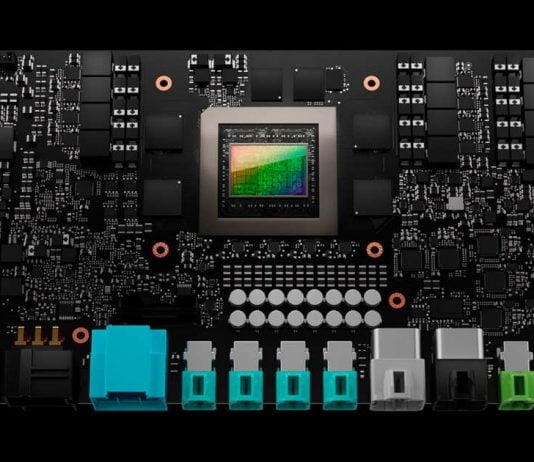Nvidia announced Drive Thor, the next generation automotive-grade system-on-a-chip for safe and secure self-driving cars.
Drive Thor delivers up to 2,000 TFLOPS of performance while reducing overall system costs and can be used in autonomous driving and driver assistance, parking, driver and occupant monitoring, digital instrument clusters, and in-vehicle infotainment (IVI). It integrates intelligent functions such as rear-seat entertainment into one architecture.
This next-generation superchip features cutting-edge AI capabilities first introduced in the Nvidia Hopper multi-instance GPU architecture, along with Nvidia Grace CPUs and Ada Lovelace GPUs.
With MIG supporting graphics and computing, Drive Thor uniquely enables IVI and advanced driver assistance systems, and domain separation allows time-critical processes to run simultaneously without interruption. It will be available for the 2025 models and will help speed the production roadmap by delivering better performance and advanced features to the market.
In a sign of the transportation industry’s support for this new supercomputing architecture, Geely-owned automaker Zeekr will integrate Drive Thor into its next-generation electric vehicle, which goes into production in early 2025.
Drive Thor replaces Nvidia Drive Atlan and replaces Drive Orin, which is currently in production and delivers 254 TOPS of performance.
Features of Nvidia Drive Thor
Drive Thor offers multi-domain computation and separates autonomous driving and IVI tasks. Individual functions are well powered by dozens of electrical control units dispersed throughout the vehicle. Drive Thor enables manufacturers to efficiently integrate many functions into a single SoC. This eases supply constraints, simplifies vehicle design development, and can result in significant cost savings, weight savings, and cable reduction.
Drive Thor’s 8-bit floating point (FP8) capabilities are another asset. Developers lose neural network precision when moving from 32-bit FP data to 8-bit integer format. Drive Thor features FP8 accuracy of 2,000 TFLOPS, allowing you to move to 8-bit without sacrificing accuracy.
Drive Thor uses the inference Transformer Engine. This engine enables Drive Thor to accelerate the inference performance of transformer deep neural networks by up to 9x — which is most important to support large-scale and complex AI workloads related to autonomous driving systems.
With its latest NVLink(R)-C2C chip interoperability — C2C chip work can be shared, scheduled and circulated across the link with minimal load. This enables automakers to build software-defined vehicles with ample compute headroom, flexibility, and continuous upgradability through secure software updates over the air.
Drive Thor is designed to deliver the highest level of functional safety. Nvidia is the only firm that takes a consistent approach to safety across all systems, from the data centre to the automobile. Safety is built into every stage of Nvidia’s development process, including design, manufacturing, and vehicle operation.
Drive Thor SoCs and AGX boards are designed to meet the ISO 26262 standard. Additionally, Drive Thor SoCs and software are designed and manufactured following ISO 21434, which provides a pathway for compliance with regulatory security regulations such as UNECE Rule 155.
